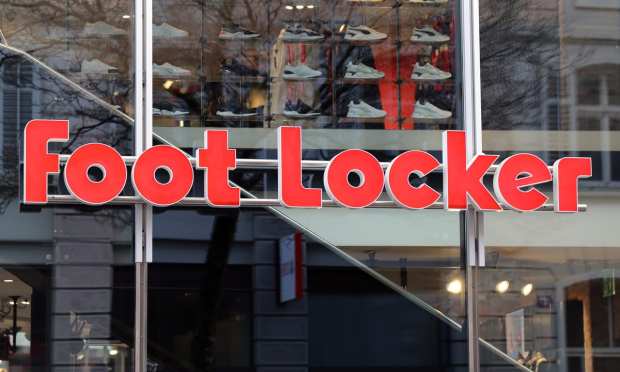Foot Locker Keeps Focus On Stores As It Takes Victory Lap For Q1

From a macro retailing perspective, Foot Locker’s earnings results for Q1 put a ribbon on a stellar week for U.S. retailing. Its success joined Macy’s, Walmart, Target and others in showing that the stimulus-fueled consumer is ready to spend as the economy reopens. But behind the numbers, Foot Locker’s digital-first strategy looks like it’s under construction while its competitors are leading the pack.
First, the numbers. Foot Locker’s fiscal calendar measures its Q1 results from February through May 1, so the lockdowns of 2020 had a bigger effect on its earnings than retailers who measure Q1 from January through March. That measurement twist resulted in huge percentage growth. Net income came in at $202 million, compared with a net loss of $110 million in 2020. As compared to the first quarter of 2019, earnings per share increased 27 percent. Comp store sales increased by 80.3 percent. Total sales, including eCommerce, increased by 83.1 percent, to $2,153 million in the first quarter of 2021, compared with sales of $1,176 million in the same period last year. Compared to the first quarter of 2019, total sales increased 3.6 percent.
That’s the simple part. After that, Foot Locker lacked detail about its digital strategy, physical retail strategy and its financial outlook for the rest of the year. On the earnings call, it reported that its direct-to-consumer sales (digital) rose 47 percent compared to 2020. During the first quarter, on a global basis, the company opened 12 new stores, remodeled or relocated 15 stores and closed 58 stores. As of May 1, its store count was 2,952 stores in 27 countries in North America, Europe, Asia, Australia and New Zealand. However, one if its retail brands is being retired. Foot Locker is folding one-third of its Footaction stores into the Foot Locker banner and will close the rest. While other retailers such as Dick’s Sporting Goods are merging in-store and online sales, Foot Locker seems to be focusing on its in-store business.
As CEO Richard Johnson told the company’s earnings call on Friday (May 21), the Footaction decision was made due to expiring leases, overlap with existing Foot Locker stores and its growing eCommerce business. However, he admitted that the in-store and digital efforts were a “shared investment.”
“All of our touch points whether it be physical stores or … in the digital environment represent a key competitive advantage for us,” Johnson told the audience on the call. “As we continue to think about our real estate portfolio, it’s no doubt that the retail market is changing, it’s no doubt that the customer preference and how they buy their decision point is happening a lot earlier in the process, which includes the digital environment. So, as we continue to see trends in the market. We will continue to flex our real estate portfolio to ensure that we are delighting the customer, wherever they make their decision.”
And after they make that decision, cash is king. When asked about developing alternative payments at Foot Locker stores, Johnson noted that most of the Foot Locker stores are based in neighborhoods or geographical areas that are cash-centric. He did not add any detail as to whether the company would try to change that. And while the company held off on guidance for the rest of the year, Johnson did sound an optimistic note based on freeing inventory from port congestion, particularly on the West Coast, as well as a healthier economy. That optimism included the back-to-school season.
“We truly believe that the kids will be physically back at school and it will be a much different pattern than last year,” he said. “They’ll be back in sports, which helps things from our point of view.”
